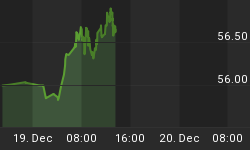6/16/2010 9:05:30 AM
Trade Recommendations:
Take no action.
Daily Trend Indications:

- Positions indicated as Green are Long positions and those indicated as Red are short positions.
- The State of the Market is used to determine how you should trade. A trending market can ignore support and resistance levels and maintain its direction longer than most traders think it will.
- The BIAS is used to determine how aggressive or defensive you should be with a position. If the BIAS is Bullish but the market is in a Trading state, you might enter a short trade to take advantage of a reversal off of resistance. The BIAS tells you to exit that trade on "weaker" signals than you might otherwise trade on as the market is predisposed to move in the direction of BIAS.
- At Risk is generally neutral represented by "-". When it is "Bullish" or "Bearish" it warns of a potential change in the BIAS.
- The Moving Averages are noted as they are important signposts used by the Chartists community in determining the relative health of the markets.
Current ETF positions are:
DIA - Long at $100.46
QQQQ - Long at $45.55
SPY - Long at $108.52
Daily Trading Action
The major index ETFs opened higher and then took different paths. The NASDAQ-100 was moving up aggressively in the first half hour of trading driven, in large part, by the rise of its components in the Semiconductor Index (SOX 371.47 +19.50), which rose 5.5% on the day! The Dow and S&P-500 moved lower in the opening minutes to test down toward Monday's closing price but the bulls jumped in before price could be pushed down very far and the climb began. Although all the major indexes moved somewhat lower after the first half hour of trading, the move was never significant and the major indexes marched higher through the rest of the session. This activity was mirrored by the Russell-2000 (IWM 66.99 +1.64) which rose 2.5% on the day. The Bank Index (KBE 24.80 +0.67) rose 2.8% while the Regional Bank Index (KRE 24.84 +0.53) rose 2.2%. All equity indexes we regularly monitor are in trading states, above their 200-Day Moving Averages, and above their 20-Day Moving Averages. The 20+ Yr Bonds (TLT 96.51 -0.40) moved inverse to equities but no where near proportionally.
There were four economic reports of interest released:
- Export Prices ex-agriculture (May) rose 0.6%
- Import Prices ex-oil (May) rose 0.5%
- Empire Manufacturing Survey (Jun) came in at 19.57 versus an expected 20.0
- Net Long-Term TIC Flows (Apr) showed inflows of $83.0B
All four reports were released before the open.
98% of the stocks in the S&P-500 posted gains on the day. This occurred on light to average volumes. This is the time of year where volumes are relatively light, so is somewhat normal seasonally.
All ten economic sectors in the S&P-500 moved higher led by Industrials (+3.0%), Tech (+2.9%), Energy (+2.7%), Financials (+2.6%), and Materials (+2.6%).
Implied Volatility sank with the S&P-500 (VIX 25.87 -2.71) implied volatility falling nine percent and the implied volatility for the NASDAQ-100 (VXN 26.37 -2.57) falling 9.5%.
Commentary:
Tuesday's session was all about the Dow and S&P-500 breaking up through the 200-Day Moving Averages (DMAs). This was the fourth attempt to break up through the most watched technical indicators in trading. The leading indexes (NASDAQ-100, Russell-2000, and Semiconductor Index) had already crossed their respective 200-DMAs and were leading the major indexes upward above these important levels. Those levels were 11,310 for the Dow which finished at 11,404.77, and the barrier for the S&P-500 was 1,108 with the S&P-500 finishing at 1,115.23.
We now expect the bears to get involved to try to move the major indexes back below their 200-DMAs. We believe that the bulls will be able to thwart this move and the markets will then move into a more bullish stance overall.
It should be noted that this coming Friday is a quarterly derivatives expiration day known as quadruple witching. On Friday, single stock futures, stock index futures, stock index options, and stock options will expire. This generally leads to higher volume on that Friday as well as added volatility for the week. In addition to this, it should be noted that the Russell-3000 will be rebalanced the following Friday, June 25th. More than 460 companies will be swapped into and out of the Russell-3000 universe. This will affect trading for the coming two weeks and will result in one of the heaviest trading volume days of the year on Friday, June 25th.
We hope you have enjoyed this edition of the McMillan portfolio. You may send comments to mark@stockbarometer.com.















